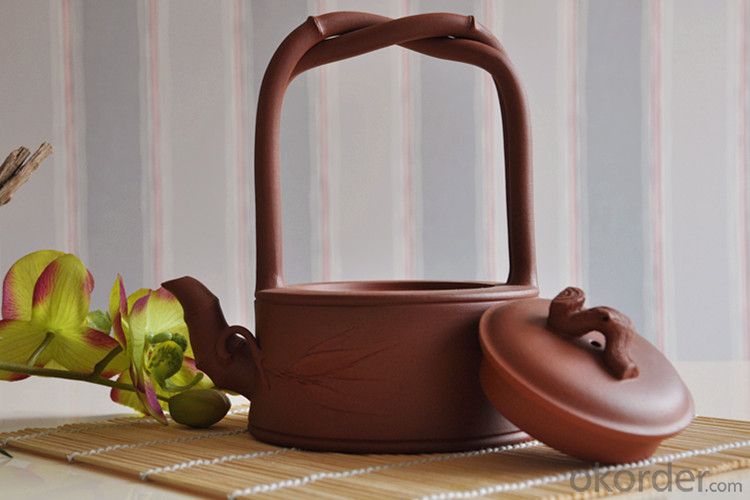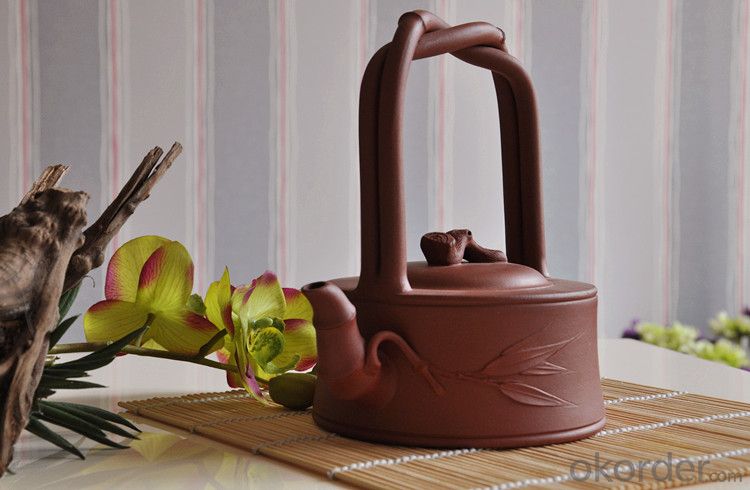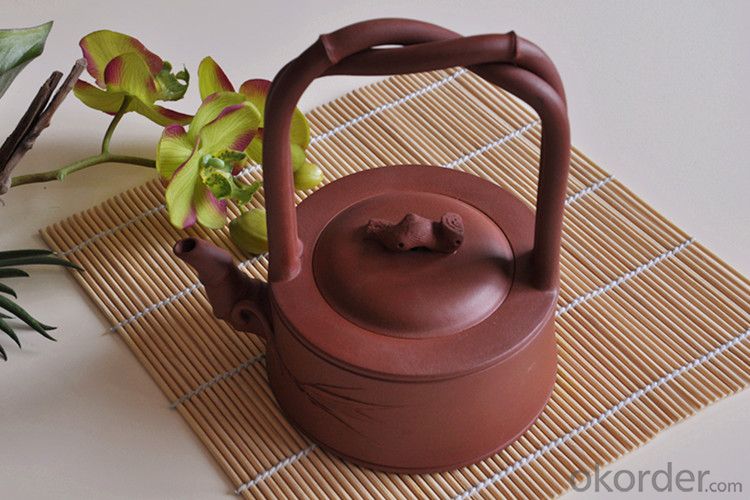Loading Port:China Main Port
Payment Terms:TT or LC
Min Order Qty:-
Supply Capability:-



The teapot probably derived from the ceramic kettles and wine pots which were also made in bronze and other metals and were a feature of Chinese cultural life for thousands of years. The teapot was invented during the Yuan Dynasty, tea preparation in previous dynasties did not utilize a teapot.
[1In the Tang Dynasty, a cauldron was used to boil ground tea, which was served in bowls. Song Dynasty tea was made by pouring water boiled using a kettle into a bowl with finely ground tea leaves. A brush was then used to stir the tea. The innovation of the teapot, a vessel that steeps tea leaves in boiling water, occurs during the late Yuan dynasty. Written evidence of a teapot appears in the Yuan Dynasty text, Jiyuan Conghua, which describes a teapot that the author, Cai Shizhan, bought from the scholar Sun Daoming. By the Ming Dynasty, teapots were widespread in China.
The earliest example of a teapot that has survived to this day seems to be the one in the Flagstaff House Museum of Teaware; it has been dated to 1513 and attributed to Gongchun.
A teapot is a vessel used for steeping tea leaves or an herbal mix in boiling or nearboiling water, and for serving the resulting infusion which is called tea. Dry tea may be available either in tea bags or as loose tea, in which case a tea infuser or tea strainer may be of some assistance, either to hold the leaves as they steep or to catch the leaves inside the teapot when the tea is poured. Teapots usually have an opening with a lid at their top, where the dry tea and hot water are added, a handle for holding by hand and a spout through which the tea is served. Some teapots have a strainer builtin on the inner edge of the spout. A small hole in the lid is necessary for air access inside to stop the spout from dripping and splashing when tea is poured. In modern times, a thermal cover called a tea cosy may be used to enhance the steeping or to prevent the contents of the teapot from cooling too rapidly.
Early teapots are small by westernstandards because they are generally designed for a single drinker and theChinese historically drank the tea directly from the spout. The size reflectsthe importance of serving small portions each time so that the flavours can bebetter concentrated, controlled and then repeated.
From the end of the 17th century tea wasshipped from China to Europe as part of the export of exotic spices and luxurygoods. The ships that brought the tea also carried porcelain teapots. Themajority of these teapots were painted in blue and white underglaze. Porcelainbeing completely vitrified will withstand sea water without damage, so theteapots were packed below deck whilst the tea stayed on top in the dry.
Tea drinking in Europe was initially thepreserve of the upper classes since it was very expensive. Porcelain teapotswere particularly desirable because porcelain could not be made in Europe atthat time. It wasn't until 1708 that Ehrenfried Walther von Tschirnhaus deviseda way of making porcelain in Dresden, Germany, and started the Meissen factoryin 1710. When European potteries began to make their own tea wares they werenaturally inspired by the Chinese designs.
In colonial America, Boston became theepicenter for silver production and artistry. Among the many artists in Boston,there were four major families in the city's silver market, including Edwards,Revere, Burt and Hurd. Their works of art included silver teapots.